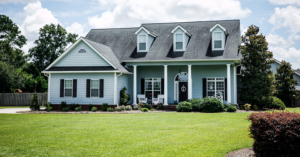A single family home rehabilitation program that enables you to finance both the purchase or refinance of a house and/or the cost of its rehabilitation through a single mortgage.
Section 203(k) insurance enables home buyers and homeowners to finance both the purchase (or refinancing) of a house and the cost of its rehabilitation through a single mortgage or to finance the rehabilitation of their existing home.
Section 203(k) is one of many FHA programs that insure mortgage loans, and thus encourage mortgage companies to make mortgage credit available to borrowers who would not otherwise qualify for conventional loans on affordable terms (such as first time home buyers) and to residents of disadvantaged neighborhoods (where mortgages may be hard to get).
Section 203(k) fills a unique and important need for home buyers in another way as well. When buying a house that is need of repair or modernization, home buyers usually have to follow a complicated and costly process, first obtaining financing to purchase the property, then getting additional financing for the rehabilitation work, and finally finding a permanent mortgage after rehabilitation is completed to pay off the interim loans. The interim acquisition and improvement loans often have relatively high interest rates and short repayment terms.
However, Section 203(k) offers a solution that helps both borrowers and mortgage companies, insuring a single, long term, fixed or adjustable rate loan that covers both the acquisition and rehabilitation of a property. Section 203(k) insured loans save borrowers time and money, and also protect mortgage companies by allowing them to have the loan insured even before the condition and value of the property may offer adequate security. Insurance commitments for 17,000 homes were made in 1996; the estimated number of homes to be insured under Section 203(k) for 1997 is 19,000, and 15,000 for 1998. For housing rehabilitation activities that do not also require buying or refinancing the property, borrowers may also consider HUD’s Title I Home Improvement Loan program.
The extent of the rehabilitation covered by Section 203(k) insurance may range from relatively minor (though exceeding $5000 in cost) to virtual reconstruction: a home that has been demolished or will be razed as part of rehabilitation is eligible, for example, provided that the existing foundation system remains in place. Section 203(k)-insured loans can finance the rehabilitation of the residential portion of a property that also has non residential uses; they can also cover the conversion of a property of any size to a one to four unit structure. The types of improvements that borrowers may make using Section 203(k) financing include:
- Structural alterations and reconstruction.
- Modernization and improvements to the home’s function.
- Elimination of health and safety hazards.
- Changes that improve appearance and eliminate obsolescence.
- Reconditioning or replacing plumbing; installing a well and/or septic system.
- Adding or replacing roofing, gutters, and downspouts.
- Adding or replacing floors and/or floor treatments.
- Major landscape work and site improvements.
- Enhancing accessibility for a disabled person.
- Making energy conservation improvements.





